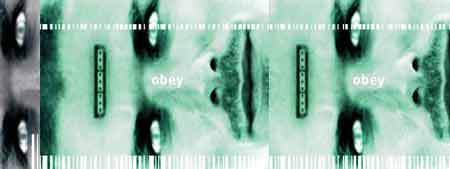BY LETTER
Hyperautism and Ultraconscious Depersonalization Disorder
Practically all evolved bionts have a subjective internal self-model, strongly tied to their bodies and phenomenologically experienced as the self. This experience is due to the inability of biont brains to experience autosentience in the same way that an AI or vec can. An aioid can directly perceive eir own internal processes and functions, making eir self-model indistinguishable from the self.
However a biont's self-perception is generally much less accurate. Certain mental disorders such as schizophrenia, anosognosia, alien hand syndrome, Anton's syndrome, dissociative disorders and complete depersonalisation - as well as various mystical states - can impair parts of or disrupt this self-consciousness, but in general it is a very resilient and personally important system, and is perfectly adequate for most purposes at the baseline human level.
When the first superbright cyborgs developed during the Interplanetary age, they discovered a serious problem with their vastly enhanced brains. As long as the brain enhancements merely extended the mind along the traditional directions (memory, emotion, intelligence etc.) self-consciousness was not strongly affected. But when enhanced internal feedback - "ultraconsciousness" - was added in the 430's(AT) by the Zerodyn R&D Collective, they discovered a problem with too clear internal perception. The Zerodyn architecture was intended to enable the cyborg mind to monitor itself just as the mind normally monitors the body - a direct understanding achieved using early gnostic overlay systems connected to AI symbionts. However, the first 32 Zerodyn cyborgs became aware about their self-processes and consciousness loops on a totally new level compared to baselines and earlier cyborgs. To them the self was seen for what it was: a symbol like any other. In nearly all cases this caused a profound depression similar to complete depersonalisation, where they experienced themselves as robots, controlled by external forces (despite their intellectual knowledge that these forces were actually their own decisions). The state was called "Ultraconscious depersonalisation disorder", or UDD.
The failure of the Zerodyn architecture stimulated research among the Borelsky Archipelago cyborg habitats in the Belt, influenced by the Buddhist cyberpsychology of Yagata Nagai. They found a cultural coping mechanism in different strains of Buddhist doctrines, making it possible to use Zerodyn-style total self-understanding without UDD. This was one of the first major uses of cultural programming to maintain extreme enhancements; earlier transhumanist and Genetekker memetic engineering had been pointing in this direction, but the Borlesky Meditations were the first necessary mental training to handle an enhanced existence form.
Although ultraconsciousness was possible to maintain using certain deliberate mental disciplines making it acceptable to the biont mind, ultraconscious beings found new problems. Through their near-total internal understanding they tended to reach high levels of internal honesty, which led to them being socially inept in contact with other beings without ultraconsciousness - their frankness, tendency to assume other beings had equally total insight into their own minds and occasional lapses into deterministic or non-personal thinking tended to limit their interactions.
It should be noted that most AIs do not share the biont self-model, and seldom have problems with ultraconsciousness. Ultraconsciousness is the rule among entities S1 and above, making it necessary for all former bionts wishing to ascend to develop a suitable coping technique.
When the first trans-singularity cyborgs appeared during the first Federation, another related problem developed: hyperautism. Ultraconscious cyborgs now could not just understand their own minds nearly perfectly, but also the minds of subsingularity beings around them. These subsingularity beings would appear to the cyborg as being just parts of its mind, all their actions as deterministic and predictable as imaginary figures. To the cyborgs everybody else (except for fellow transingularity beings) would appear "two dimensional", simple non-aware puppets that were not so much autonomous as subtly controlled by their own actions. The act of merely speaking to them would reprogram their behavior, making many cyborgs withdraw altogether either out of fear of hurting others or simply because they experienced it as if there was nobody out there to speak to. Other cyborgs accepted the hyperautism, and chose to treat the subsingularity beings as mere tools (sometimes called hyperautistic sociopathy, HAS).
Today hyperautism and HAS are usually handled by immersion in the mature transingularity cyborg cultures, which have found many different value-systems and phenomenological perspectives to handle the issues of dealing with subsingularity beings. Special Post-Enlightenment Therapeutic Societies in Sophic space provide entire habitats for developing posthuman stability. In desperate cases transingularity empathic modules can be used to emulate empathy or social interaction desires during a transition period (such modules remain one of the main exports of the Communion cyborg cultures to this day). Improved ascendence protocols and training have made the disorders fairly rare, although most ascendees tend to experience or at least touch the states briefly. A more common problem is the temporary UDD or hyperautism caused by gnostic overlays; modosophonts who commonly use mind-expansion technology tend to develop similar states that carry over even in the non-augmented state. Treatment consists of decreasing overlay use and in serious cases therapeutic gnostic overlays.
Related Articles
- Algernon
- Autosentience, Autoscience
- Blight
- Complex Psychological Disorders
- TherapAIst - Text by Teris
An TherapAIst is a sophont that treats malfunctioning AIs. Originally, TherapAIsts were also AIs, but modosophonts with DNIs can perform the task capably as well. Due to the amount of damage required to overwhelm the self-repair and maintenance algorithms inherent in most AIs, this requires skill and care on the part of the TherapAIst, and sometimes poses a hazard to the TherapAIst from misguided attack by the malfunctioning AI - Transcendence Blights and Perversities
- Transcendent Burn-out Theory
Appears in Topics
Development Notes
Text by Anders Sandberg
Initially published on 10 January 2003.
Initially published on 10 January 2003.







